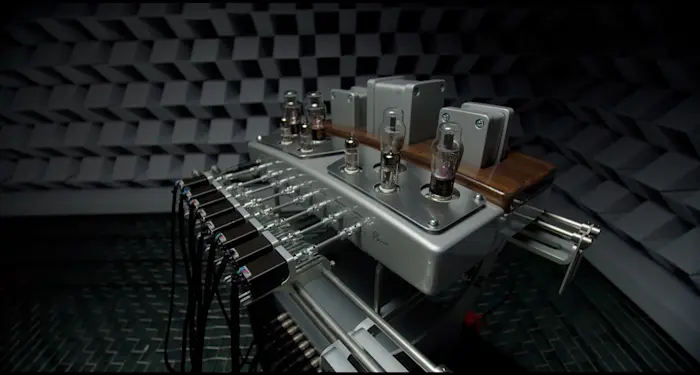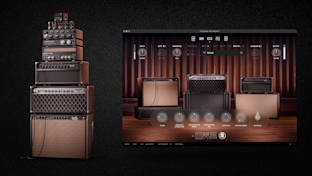
Neural DSP Amplifier Modeling Technology

In our recent research paper, we outline how to pose controllable amp modeling as a machine learning problem and describe the Neural DSP data-driven amp modeling pipeline. This article summarizes the process and provides sound examples of a neural network model pitted against a real tube amp reference, as well as a state-of-the-art offline method using the SPICE circuit simulation software. Listening test results from the paper demonstrate that a data-driven method can match the high perceptual quality of the SPICE model, while being real-time feasible, and requiring no circuit analysis or any intrusive measurement.
Why is amplifier modeling valuable and what makes it challenging?
We guitar players love the sound of our analog gear, with tube amplifiers being perhaps the most coveted examples. The same beloved gear is also often expensive, takes up valuable space in our homes, and is cumbersome to lug around for gigs. Therefore, there is high value in accurately reproducing the sound and feel of the analog equipment in a digital format.
Most analog electronics can be modeled to a high degree of accuracy using circuit simulation software such as SPICE. However, problems with this approach arise when the model needs to run real-time with low latency, making such white-box virtual analog modeling an art of approximation and trade-offs.
The conventional modeling practice is to apply digital signal processing to approximate functional blocks in the circuits, such as using digital filters to model passive subcircuits and digital waveshapers to model tubes and clipping stages. However, this approach still requires circuit analysis and multi-point measurements, and is time consuming, prone to errors, and can even be dangerous.
Neural Networks for Amplifier Modeling
Neural networks have proven themselves a powerful tool for black-box amp modeling, as exemplified by our own Neural Capture technology. These methods allow making amp models by simply measuring the input and output of an amplifier. However, the existing methods for neural amp modeling are aimed at making snapshot models of amplifiers at fixed control positions. Although an accurate snapshot is great for the specific tone the amp was dialed for, you sometimes want to tweak the full range of controls in the original amp. While shaping the tone with digital processing offers a lot of flexibility, this tweaking method easily diverges from the controls present in the original device.
As we set out to create a neural network model with continuous control, we quickly realized that a collection of snapshots of models at various control positions does not scale well. For example, take your typical amplifier with six controls (gain, bass, mid, treble, presence, master) and let each knob take a value from 1 to 10. When you start counting all the combinations, you quickly notice an exponential scaling pattern. In this case, you would end up with a million control combinations, which would be impractical to measure, let alone store and ship the resulting bag of snapshots. Furthermore, the control values would still be step-wise, and it’s not clear how to accurately recreate the intermediate sounds between snapshots.
Introducing TINA
The solution to continuous control turns out to be simple in principle – just provide your neural net with more information and it will figure things out. In addition to the clean input and a target response signal, you have to tell the neural network what the control positions are. After seeing enough examples (typically a few thousand control positions), the model will learn to fill in the gaps and generalize its response to unseen control positions and input signals. The tricky part remains how to reliably collect the training examples from the physical amp. Humans are simply too slow, imprecise, and easily distracted to turn the knobs at the required scale.
Enter our Telemetric Inductive Nodal Actuator (TINA), a proprietary data collection robot.
Connect the robot to an amp and specify how much time you have, TINA figures out what control positions need to be recorded, plans the schedule to turn the knobs while minimizing wear-and-tear, and finally returns to you with a collection of recordings annotated with the related control positions.

Watch this video to see TINA in action.
Advantages of Data-Driven Amp Modeling
By combining robotic data collection with our knowledge on machine learning for audio, we are able to distill the full range of an amp’s continuous control into a single neural network model. While the main advantage of this method is its ability to produce high fidelity models, further benefits arise from the unified nature of the modeling approach. From a modeling perspective, a data driven approach provides a consistent way of measuring how good the model sounds like, and an automatic method of tuning model parameters to maximize the likeness to the real thing.
From a practical measurement perspective, robotic data collection has further advantages. Collecting data with TINA reduces the need for tedious and time-consuming expert electrical engineering work, and provides precise, automatic, and non-intrusive amp measurements. Using the physical knobs also naturally captures the potentiometer response curves as a part of the data collection process. All this leads to a faster turnaround time that lets us focus on sonic quality control and getting the amp sound just right, instead of the monotonous probing and manual tuning related to white-box modeling.
Summary
Robotic data collection enables us to make neural amp models with continuous controls. The resulting neural models reach very high fidelity and can match a meticulously hand-crafted offline SPICE model in perceptual quality, as demonstrated in our research paper. Results in the paper use our data collection pipeline, but are based on an open neural network architecture for transparency.
We’ve made sound samples available on the paper’s demo page and recommend readers to have a listen at https://neural-dsp-publications.github.io/demo-page-2022/.
Conclusion
The name “Neural DSP” is not just a marketing gimmick; it reflects our use of advanced neural network technology to power not only our acclaimed Neural Capture feature, but also the controllable full circuit models already deployed on the Quad Cortex and plugins.
Further reading
More technical details are available in the research paper.


Introducing Archetype: John Mayer X
